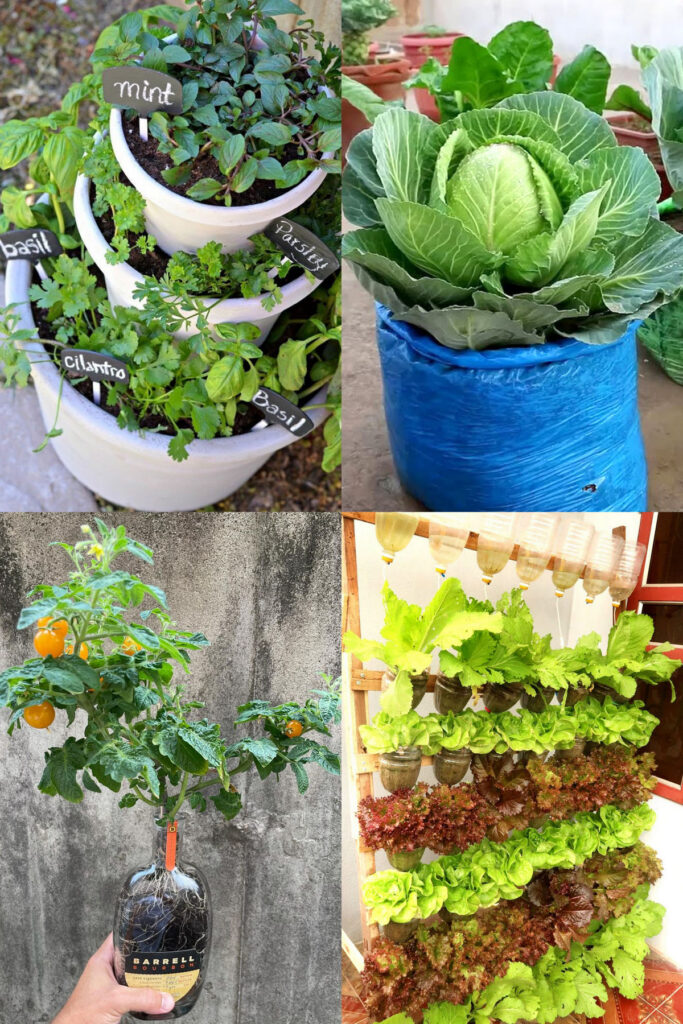Gardening is a rewarding and therapeutic hobby—but it doesn’t have to be expensive. Whether you’re working with a backyard, a balcony, or just a few pots on a windowsill, there are many ways to grow beautiful plants, vegetables, and herbs without spending a lot of money.
Here are smart, budget-friendly tips to help you build a flourishing garden without breaking the bank.
1. Start with Seeds Instead of Plants
Buying young plants (also called starts) is convenient, but seeds are much cheaper.
Benefits of growing from seed:
- Costs pennies per plant
- Gives access to rare or heirloom varieties
- Helps you learn about plant lifecycles
Start seeds indoors using recycled containers, then transplant them when they’re strong enough.
2. Use Recycled Containers as Pots
You don’t need fancy pots to grow plants.
Try:
- Yogurt cups
- Tin cans
- Egg cartons
- Plastic bottles cut in half
- Old buckets or crates
Just make sure containers have drainage holes at the bottom to prevent root rot.
3. Make Your Own Compost
Skip expensive store-bought soil enhancers and make your own compost at home.
What to compost:
- Fruit and veggie scraps
- Coffee grounds and filters
- Eggshells
- Leaves and grass clippings
Avoid meat, dairy, or oily foods. Over time, this “garden gold” enriches soil naturally and for free.
4. Trade with Other Gardeners
Join local gardening groups (online or in person) to:
- Swap seeds or seedlings
- Share cuttings
- Exchange tools or pots
It’s a great way to save money, learn from others, and expand your garden variety.
5. Repurpose Household Items
Be creative with what you already have.
- Use old spoons as plant markers
- Turn an unused ladder into a vertical garden
- Repurpose a shoe organizer for herbs on a balcony
- Convert broken furniture into raised beds
Pinterest is full of DIY inspiration for budget-friendly gardening hacks.
6. Choose Low-Maintenance, High-Yield Plants
Focus on plants that offer the most value and require less care.
Good choices:
- Leafy greens (lettuce, spinach)
- Herbs (basil, parsley, mint)
- Tomatoes and peppers
- Marigolds (natural pest repellents)
- Perennials (come back year after year)
These plants give more bang for your buck, especially if you cook with them often.
7. Water Smartly
Water bills can add up—especially during hot months.
Save water by:
- Watering early in the morning or late in the evening
- Using mulch to retain moisture
- Installing a rain barrel
- Using leftover cooking water (once cooled)
Grouping plants with similar watering needs helps avoid waste.
8. Buy in Bulk and Share
If you need soil, fertilizer, or seeds, consider buying in larger quantities and splitting the cost with friends or neighbors. It’s often cheaper per unit and reduces packaging waste.
9. Learn to Propagate Plants
You don’t always need to buy new plants. Many can be grown from cuttings.
Easy to propagate plants:
- Pothos
- Mint
- Basil
- Spider plants
- Succulents
Just place cuttings in water or soil and watch them grow—it’s free and satisfying.
10. Build Raised Beds with Free or Cheap Materials
Want to garden outdoors? Skip expensive kits.
Use:
- Wooden pallets
- Scrap wood
- Concrete blocks
Just make sure the materials are safe (untreated wood is best for food gardens).
Final Thoughts: Grow More, Spend Less
Gardening doesn’t have to be costly—it’s about creativity, patience, and using what you have. By repurposing materials, growing from seeds, and trading with others, you can build a thriving garden that’s as budget-friendly as it is beautiful.
Enjoy the process, connect with nature, and celebrate every sprouting leaf and blooming flower—without worrying about your wallet.
